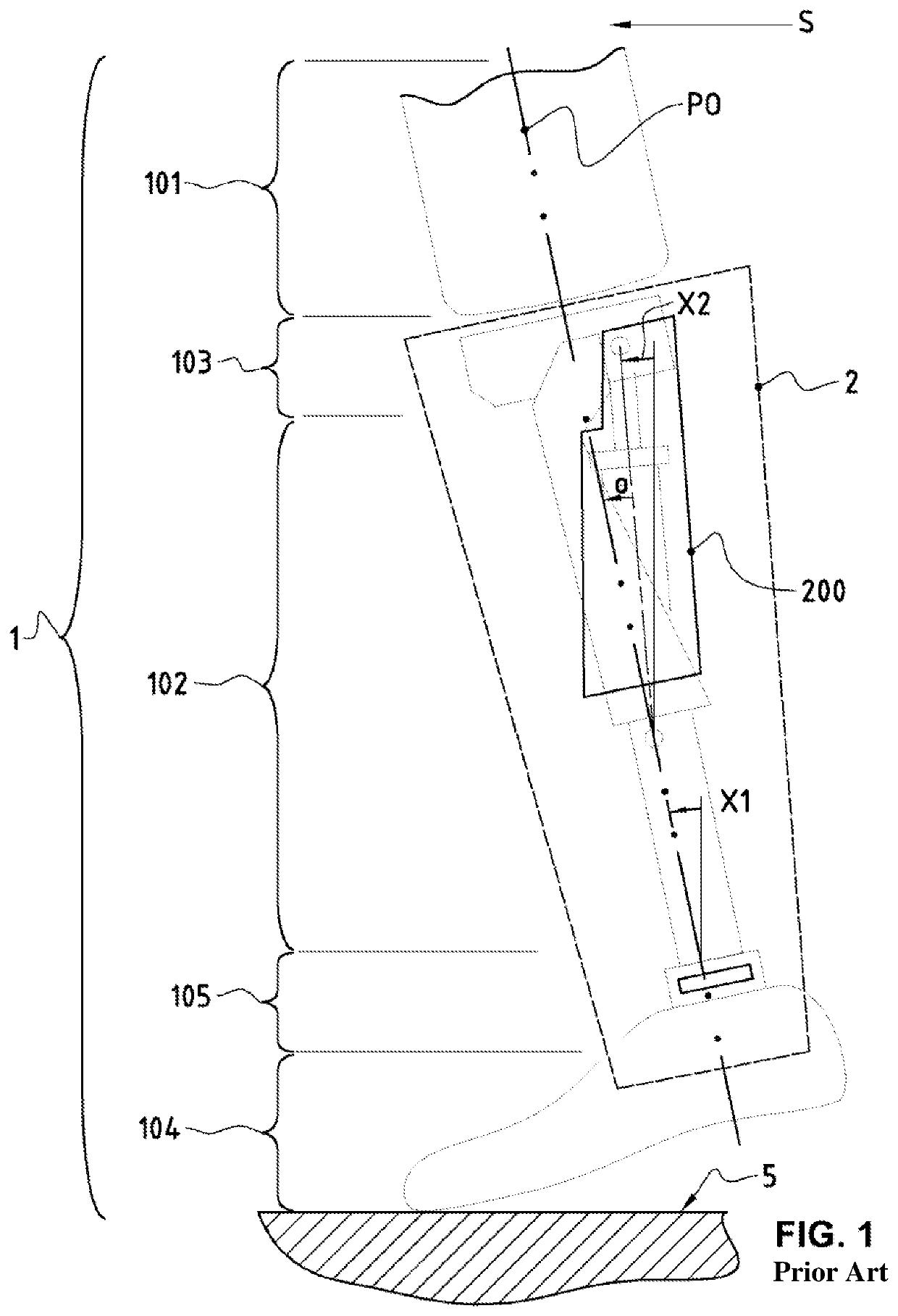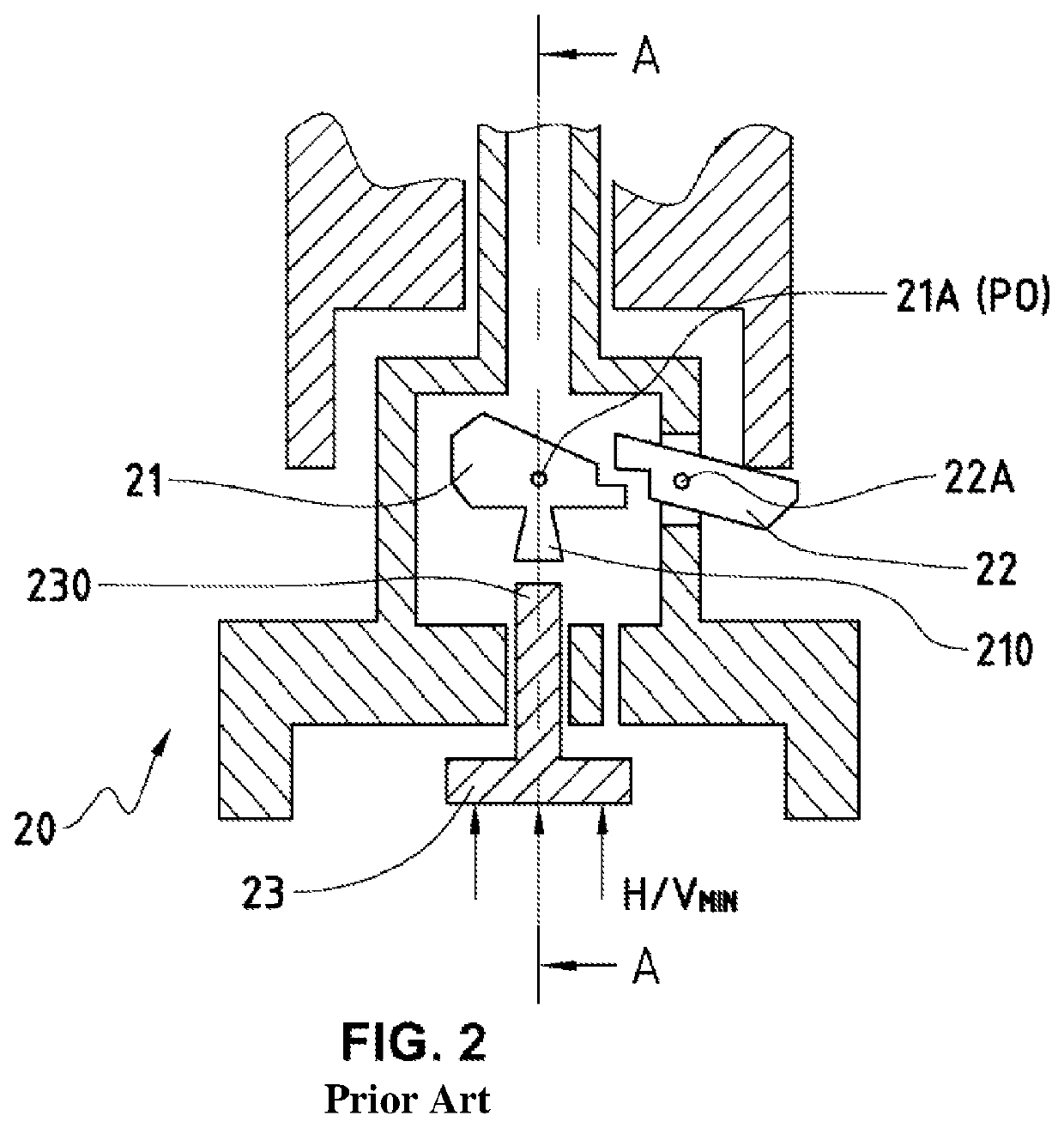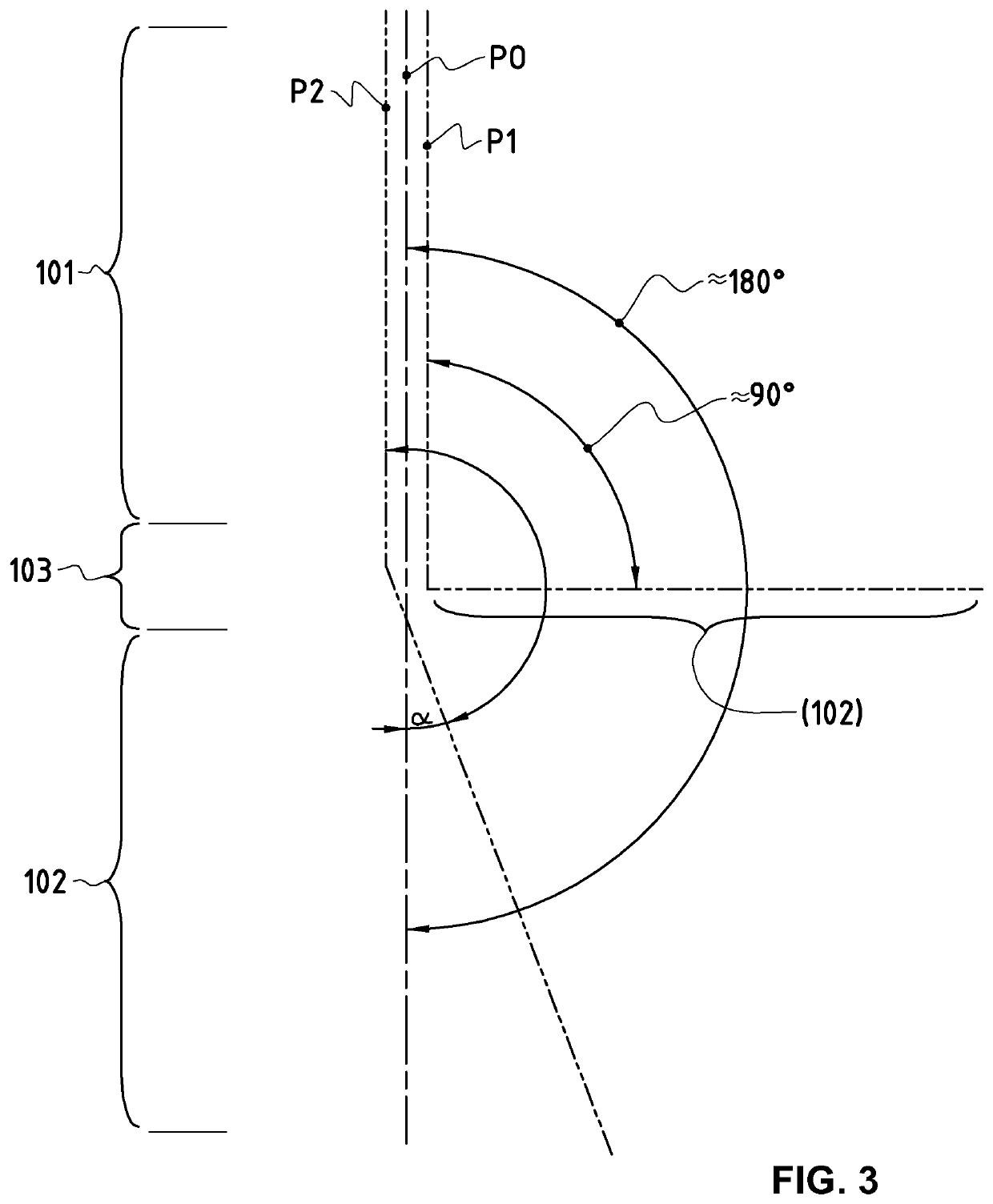Prosthesis for femoral amputee
a prosthesis and amputee technology, applied in the field of knee prosthesis, can solve the problems of consuming an appreciable amount of energy, requiring particularly efficient processors, and implementing relatively complex algorithms, and achieve the effects of optimally ensuring stability, increasing safety, and being easily adaptabl
- Summary
- Abstract
- Description
- Claims
- Application Information
AI Technical Summary
Benefits of technology
Problems solved by technology
Method used
Image
Examples
Embodiment Construction
[0024]FIG. 1 is a profile view of a swing and stance type prosthesis which will be referred to from now on simply as an “SNS” prosthesis.
[0025]The prosthesis 1 conventionally comprises a femoral part 101, ending the thigh, and intended to be adjusted on the stump of the amputee, as well as a tibial part 102 replacing the amputee's leg, and a foot part 104 replacing the amputee's foot, with a view to ensure taking support on a support surface 5, typically the ground or floor. So as to ensure an articulated connection between the femoral part 101 and the tibial part 102 of the prosthesis, the intermediate knee part 103 which connects them comprises a hinged connecting device 2 simulating this articulation by providing a degree of freedom in limited rotation between a first position P0 of hyperextension, in which the femoral part 101 and the tibial part 102 extend substantially in the prolongation one from the other, and a second position P1 of maximal flexion, illustrated further on i...
PUM
 Login to View More
Login to View More Abstract
Description
Claims
Application Information
 Login to View More
Login to View More - R&D
- Intellectual Property
- Life Sciences
- Materials
- Tech Scout
- Unparalleled Data Quality
- Higher Quality Content
- 60% Fewer Hallucinations
Browse by: Latest US Patents, China's latest patents, Technical Efficacy Thesaurus, Application Domain, Technology Topic, Popular Technical Reports.
© 2025 PatSnap. All rights reserved.Legal|Privacy policy|Modern Slavery Act Transparency Statement|Sitemap|About US| Contact US: help@patsnap.com



